HUMANITARIAN AFFAIRS ASIA PRESENTS
4TH GLOBAL PEACE


HUMANITARIAN AFFAIRS ASIA PRESENTS
4TH GLOBAL PEACE


UNITED NATIONS CONFERENCE CENTRE, BANKOK I JANUARY 15 TO 17, 2025
“The fourth edition of the Global Peace Summit of Emerging Leaders, held at the United Nations Conference Centre in Bangkok, Thailand, served as a beacon of hope in a world often overshadowed by conflict. This remarkable gathering brought together 400 young leaders from 46 nations, creating a vibrant platform for meaningful discussions on the urgent need for sustainable peace.
Written by : Niki Laoura Pilitsi
Photograph by : Ash Sharifi


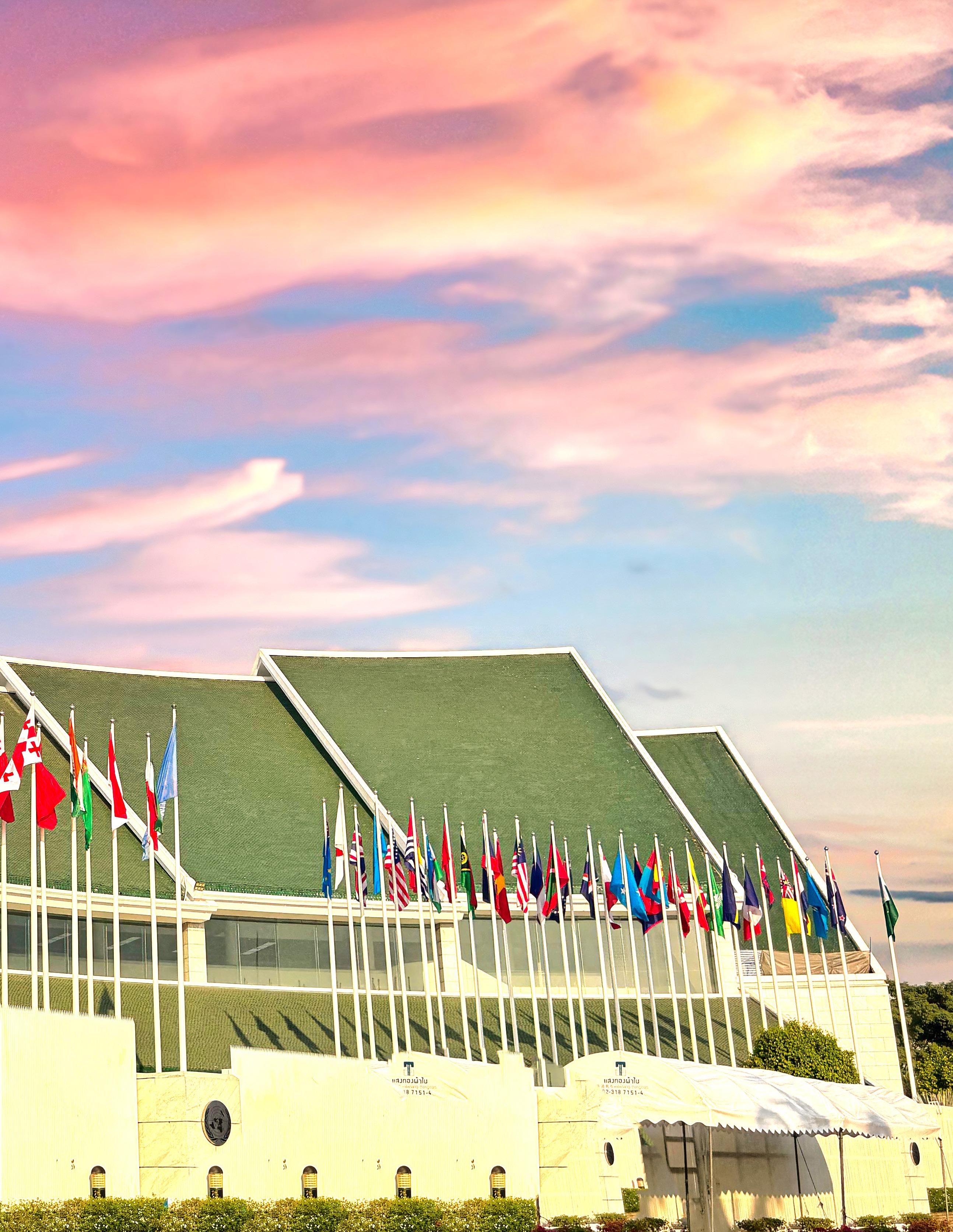

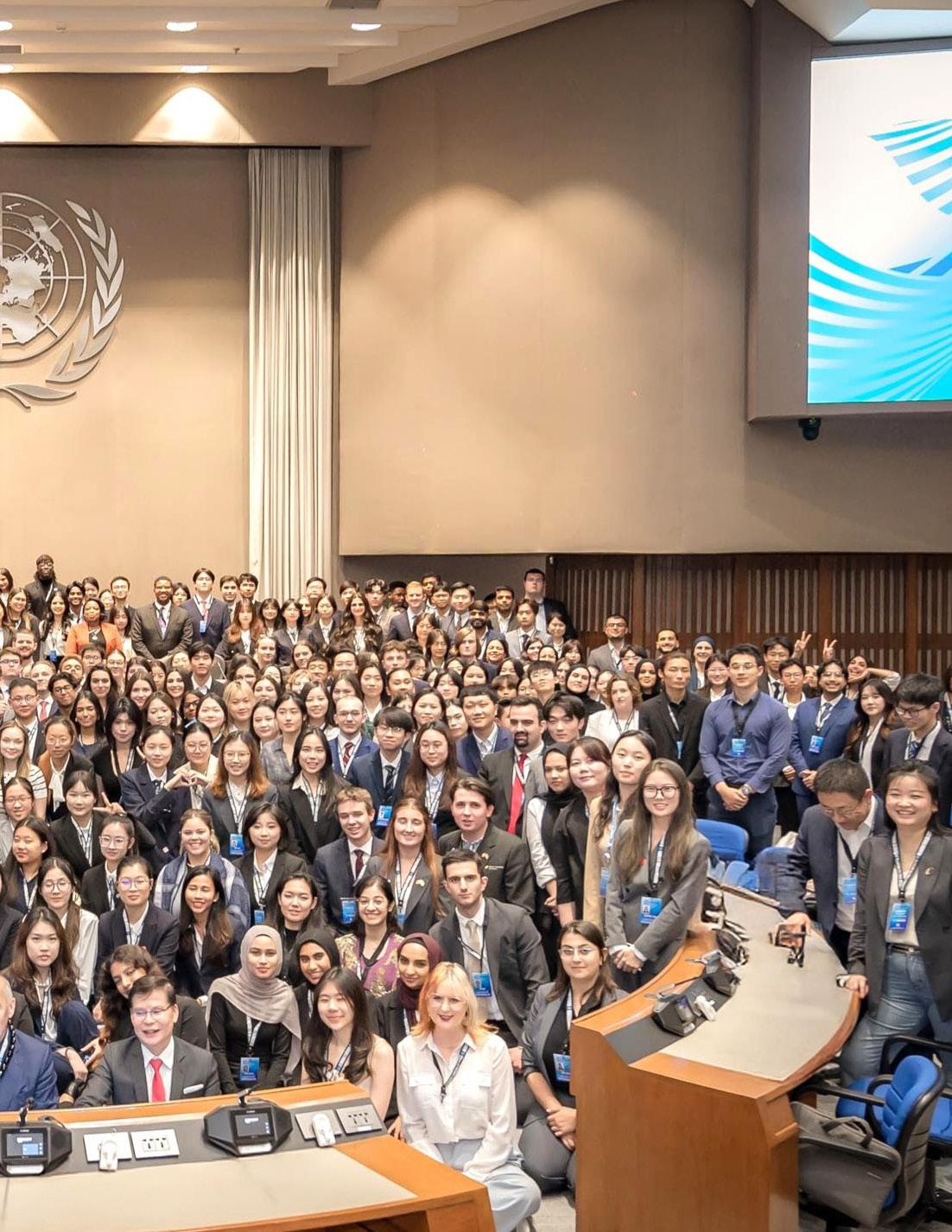
In an era of global instability, the urgency for peace has never been greater. Conflicts and atrocities worldwide remind us that passive observation is not enough. The 4th Global Peace Summit provided a platform for dedicated youth leaders and activists committed to replacing violence with sustainable peace.
From January 15 to 17, 2025, over 400 delegates from 46 nations convened at the United Nations Conference Centre in Bangkok. Hosted by Humanitarian Affairs Asia, this transformative event united emerging leaders under SDG 16’s mission for peace, justice, and strong institutions. Through profound discussions and meaningful exchanges, delegates - both seasoned activists and newcomers gained fresh perspectives on peacebuilding, shaping a movement that extends beyond the conference walls.
More than a conference, the Global Peace Summit empowers young leaders to drive change. By fostering dialogue, mentorship, and networking, it equips participants with the skills and confidence to make a lasting impact. The event underscores the vital role of youth in peacebuilding and the need for systemic reform.
Ultimately, the summit reaffirmed that peace is both a personal choice and a collective effort. It is not merely the absence of conflict but an ongoing process requiring action. The summit inspired delegates to commit to meaningful change for today and future generations by amplifying voices for justice and compassion.


The 4th Global Peace Summit addressed a pressing question: Why does lasting peace remain elusive, especially in regions plagued by long-standing conflicts and humanitarian crises? The summit served as a vital platform to examine gaps in traditional peacebuilding while exploring innovative, sustainable solutions rooted in inclusivity and long-term commitment.
A central theme emerged: the deep connection between personal and global peace. Speakers emphasised that achieving sustainable peace requires transformation on both individual and systemic levels. They challenged the conventional top-down approach, arguing that peace begins within ourselves and our immediate communities. Individual choices and actions, they asserted, lay the foundation for broader societal change. True peace, they noted, extends beyond the absence of conflict - it requires fostering empathy, resilience, and social justice. The summit outlined a comprehensive framework for sustainable peace through multiple approaches:
• Active negotiation and dialogue between conflicting parties
• Resolving long-standing grievances
• Recognizing justice as essential for lasting peace
• Building peace from the ground up through individual and community action
• Strengthening global partnerships for conflict prevention and resolution
These discussions underscored our collective responsibility to improve peacebuilding efforts. The summit’s message was clear: sustainable peace demands both personal commitment and systemic change, with justice as the cornerstone. As global citizens, we must envision peace and take intentional steps to shape it within our communities and across borders.

In a profound opening address at the 4th Global Peace Summit, Humanitarian Affairs Secretary-General Kim Solomon shared an intensely personal narrative that shaped his life’s mission. Witnessing the 9/11 attacks became a transformative moment, leading him to establish Humanitarian Affairs Asia and dedicate himself to humanitarian service. That day, he realised the devastating consequences of division and violence, igniting a lifelong commitment to fostering understanding, compassion, and peace.
From this pivotal experience, Mr. Kim has committed to nurturing the next generation of peace advocates. His message to the delegates conveyed urgency and hope, urging them to recognise their unique capacity to create peace within their local communities. This call to action took on even greater significance as the delegates received their official appointments as Peace Ambassadors for 2025 - an honour that extends beyond ceremony to embody real responsibility. This role, he emphasised, is not just about advocacy but about actively addressing the root causes of conflict, including social injustice, economic disparity, and cultural misunderstanding.
Mr. Kim stressed that each Ambassador is a catalyst for change, uniquely positioned to inspire action and foster
peace. Their one-year mandate calls for them to champion critical causes, from intercultural dialogue to addressing systemic issues such as poverty and inequality. However, this role demands more than passive participation. It requires them to apply their knowledge and skills to generate tangible, measurable impact in their communities. Whether through educational initiatives, policy advocacy, or grassroots movements, their work must result in meaningful, long-term change.
The scope of this responsibility extends beyond individual action. Peace Ambassadors are tasked with initiating projects, leading awareness campaigns, and forming strategic partnerships with local and international stakeholders. This multifaceted approach ensures their influence reaches beyond immediate circles, creating ripples of positive change globally. By leading through example, they inspire others to act with greater ambition, courage, and purpose. Their leadership is not confined to conference halls but extends into the real world, where they must navigate challenges, mobilise resources, and unite people across divides.
Mr. Kim presented peace advocacy as more than a temporary assignment - it is a lifelong transformation. Being a Peace Ambassador, he explained, is not just

about holding a title but about embracing a philosophy of peace that becomes integral to one’s identity. This perspective challenges the idea of peacebuilding as merely a profession, redefining it as a personal journey that shapes one’s character and legacy. It is a commitment that transcends time, influencing future generations and setting an example for others. His message concluded with a powerful reminder: “It all begins with you.” These simple yet

profound words reinforced the idea that global change starts with individual action. No matter how small, every commitment to peace contributes to a more significant movement toward global harmony. Through this lens, the role of Peace Ambassador becomes more than an honour - it is a calling. The summit marked the beginning of their journey as these young leaders stepped forward to make their lasting mark on the world.


His Excellency, Palestine Ambassador Walid Abu Ali took the stage before 400 delegates. The room fell silent as he delivered a sobering account of the ongoing war in Gaza. The statistics were staggering - over 47,000 lives lost, more than 100,000 injured, and 91% of Gaza’s population on the brink of famine. Most harrowing of all, he revealed that Gaza now has the highest per capita number of amputee children in the world. With 60% of Gaza’s buildings in ruins, all universities destroyed, and hospitals deliberately targeted, the United Nations estimates that rebuilding Gaza could take up to 80 years.
Yet, despite the devastation, Ambassador Abu Ali’s message was unwavering: “War is not a solution. Peace is the choice.”
As a former political prisoner, he spoke from lived experience, emphasizing that the Palestinian struggle is not a religious conflict but a fight for human rights, dignity, and the right to exist in one’s homeland. His words resonated beyond the summit’s walls, as that very night, a three-phase ceasefire agreement between Israel and Hamas was announced. The timing intensified the urgency of the summit’s discussions
- how could this fragile moment be transformed into lasting peace for Palestinians?
Ambassador Abu Ali reminded the delegates that the Palestinian struggle is a 76-year-long fight against settler-colonial occupation, unlawful imprisonment, and systematic dehumanization. The war following Hamas’ October 7 attacks and Israel’s full-scale invasion of Gaza only escalated the suffering that had persisted for decades. However, Palestinians refuse to be seen as victims. Instead, they are symbols of resilience, their existence itself an act of resistance. Their unwavering determination has fuelled a global movement, compelling individuals worldwide to examine their roles in sustaining injustice.
Ambassador Abu Ali highlighted an often-overlooked reality: 750,000 students in Gaza have lost their academic opportunities in just fifteen months. He urged young activists to amplify Palestinian voices. “Your duty is to speak up,” he said.
He also addressed the diplomatic challenges ahead, referencing the quartet’s sponsorship of the Palestine peace talks - led by the United
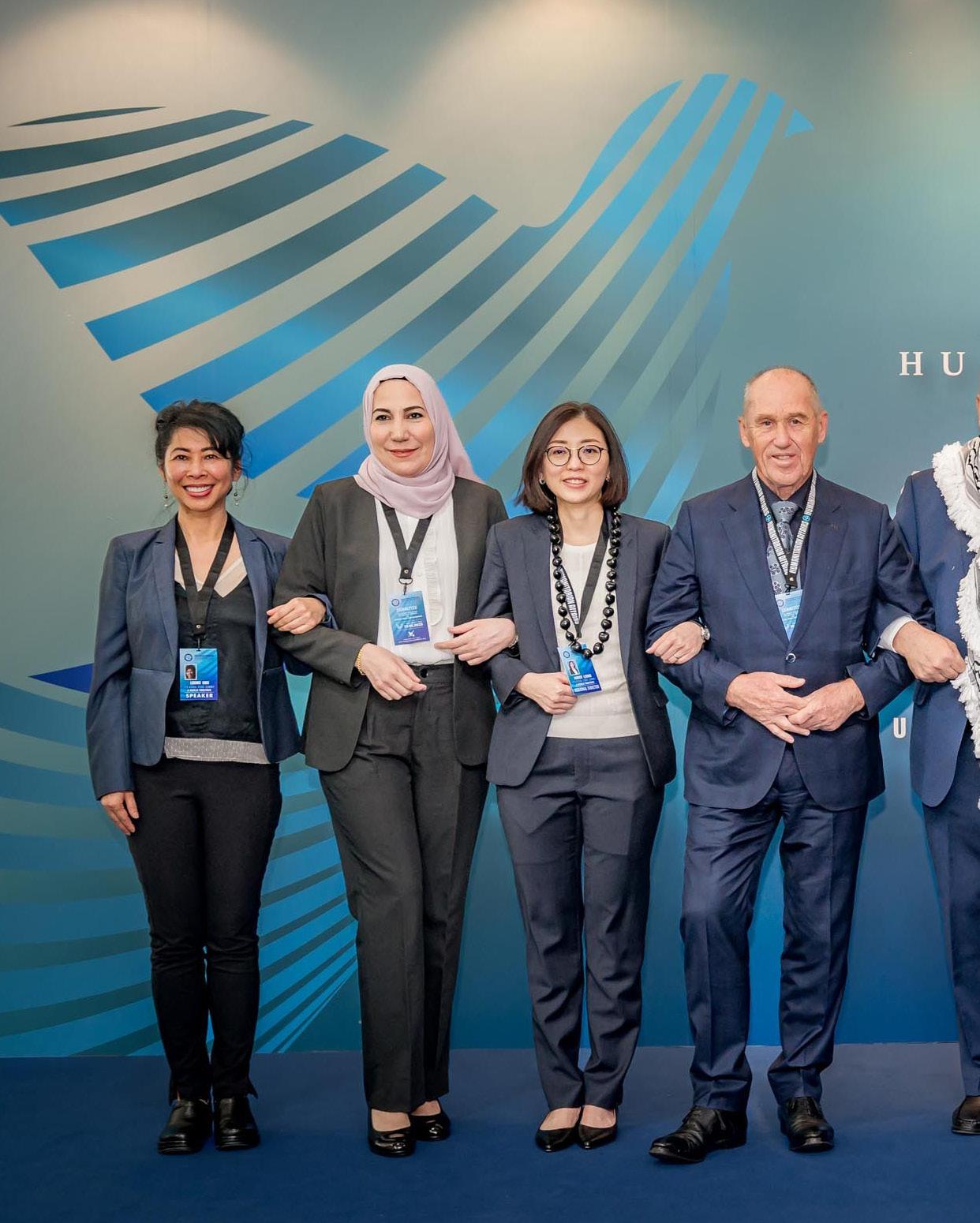
States, European Union, United Nations, and Russia. While acknowledging the international community’s failures, he firmly stated, “Peace can only be enjoyable when they recognize our rights as Palestinians.”

As the room sat in contemplative silence, one truth remained: peace is not merely the absence of war but the presence of justice. In an era where silence is complicity, Ambassador Abu Ali’s voice stood as a potent reminder that peace is an active, relentless pursuit of equity.


Janice Leong, Regional Director of Humanitarian Affairs Asia, passionately emphasised that true leadership is not defined by academic accolades or prestigious titles but by the depth of one’s compassion and the unwavering commitment to infuse love into every action. Leadership, she asserted, is not about personal gain or recognition but about serving humanity with sincerity, selflessness, and a deep sense of purpose.
With heartfelt conviction, Janice urged the delegates to recognise their boundless potential and to embrace leadership as a force for good. She encouraged them to lead with grace, uplift with kindness, and, most importantly, navigate the complexities of the modern world with empathy. She noted that true changemakers do not merely seek to manage or direct but inspire, heal, and unify.
She painted a compelling vision of a future where young leaders rise as architects of peace—dismantling walls of division, transforming differences into opportunities for connection, and fostering a culture of understanding. In an era increasingly marred by polarisation, she called upon them to reject apathy and disillusionment, instead embracing their role as catalysts for meaningful change.
Janice’s words served as both an inspiration and a challenge: to be the driving force behind a new era of global solidarity. She urged the delegates to commit to building a world where unity is not a distant dream but a tangible, lived reality - where compassion dictates decisions, and love becomes the foundation of leadership. In a world too often fractured by conflict and discord, she reminded them that the most profound impact is made not through power but the courage to care.
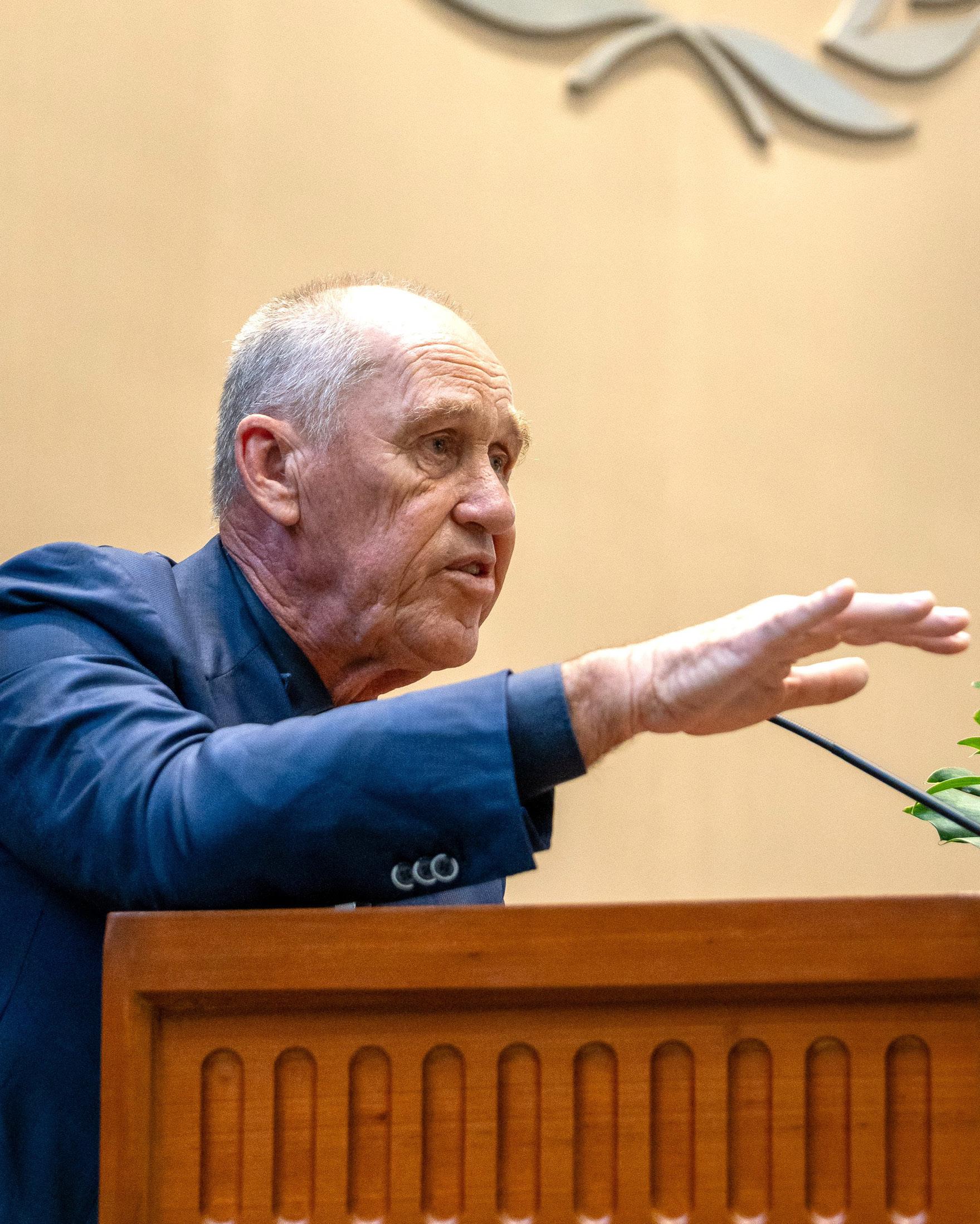
The Global Peace Index (GPI) is more than just a report. It is a crucial tool for assessing global stability and conflict trends. At the 2024 Global Peace Summit, Steve Killelea presented key findings, highlighting rising instability and opportunities for peace.
Killelea revealed alarming trends: “Fiftysix active conflicts - the highest since World War II. Ninety-two countries engaged in cross-border conflicts. Ninetyseven nations experiencing a decline in peacefulness—the sharpest deterioration on record.” These figures underscore the urgent need to address the drivers of instability and explore solutions for sustainable peace.
Yet, peace is not merely the absence of conflict. Killelea introduced the “Positive Peace” concept, emphasising that nations fostering social resilience and strong governance experience greater economic and societal stability. “Countries improving in Positive Peace have seen 118% higher GDP growth,” he noted, reinforcing the intrinsic connection between peace and sustainable development. Nations with stronger institutions, equitable distribution of resources, and lower corruption tend to be more stable and prosperous.
The economic impact of violence remains
staggering - $19.1 trillion in 2023 alone, or $2,380 per person globally. Despite this, investment in peacebuilding remains disproportionately low, accounting for just 0.2% of the total cost of violence. Killelea argued that this imbalance highlights the necessity for a more proactive approach to conflict prevention and resolution. “If even a fraction of the cost of violence were redirected to peacebuilding, the global landscape would look vastly different,” he stated.
Shifting trends in conflict resolution further complicate the global security landscape. “In the 1970s, 49% of conflicts ended in victory. Today, only 9% do,” he observed. Additionally, peace agreements have become increasingly rare, declining from 23% to just 4%. These shifts suggest that traditional methods of conflict resolution are losing effectiveness, requiring innovative diplomatic, economic, and social strategies to prevent and mitigate conflicts.
Despite these challenges, Killelea showcased real-world examples of progress. Initiatives like the Rotary Peace Project in Uganda and peace-building workshops with Myanmar refugees illustrate how structured approaches can lead to meaningful change. His Institute for Economics and Peace has played a pivotal role in these efforts, with its research utilised by organisations such as the OECD, World

Bank, and the United Nations. “Our reports are downloaded over 500,000 times annually, and we have trained 5,500 peace ambassadors across 150 countries,” he shared. These initiatives demonstrate that peace is not an unattainable goal but a tangible outcome driven by knowledge, collaboration, and targeted efforts.
Concluding his address, Killelea emphasised that peace is not an abstract ideal but a

measurable and achievable goal. “By understanding the factors that contribute to peace, we can take concrete steps toward stability,” he stated. His presentation was a powerful reminder that while challenges persist, a data-driven and strategic approach can help pave the way for a more peaceful world. Through research, investment, and collective action, achieving a more stable and harmonious global society is within reach.

In the intricate landscape of global conflict, Dr Manal Omar emerges not just as a peacebuilder but as a truth-teller who refuses to be silenced. Her message is clear and uncompromising: peace is a choice - a deeply personal commitment that transcends political negotiations and diplomatic formalities.
Having worked with the United States Institute of Peace, Omar brings a deep understanding of the complex intersectionality that shapes modern global identity. She recognises that one identity’s history can become another’s future - a profound insight gained through navigating multiple cultural landscapes. Her journey is a testament to the power of embracing contradictions and finding common ground.
“When one is harmed, all are harmed. When one is saved, all are saved,” she declares. This philosophy underpins her approach to peacebuilding. For her, peace is not an abstract theory but a lived reality, forged through her work in conflict zones like Iraq, Afghanistan, and Syria.
Omar challenges traditional narratives of conflict resolution by cantering women’s experiences. She reveals a critical truth: women are not passive victims but active architects of peace. In war-torn regions,
women consistently demonstrate an extraordinary capacity to build bridges, navigate complex power dynamics, and mobilize communities toward healing. Her critique of international humanitarian efforts is sharp and uncompromising. She exposes systemic failures: a mere 0.2% of conflict resolution funding is directed toward women, while women and youth are often instrumentalized as political tokens. She also critiques the creation of artificial civil societies that reflect Western ideologies rather than local realities.
“Peace is personal,” Omar emphasizes, challenging the notion that reconciliation occurs through high-level government agreements alone. True peace begins after official documents are signed, in the grassroots spaces where communities rebuild trust, negotiate new social contracts, and heal collective trauma.
The international community, she argues, must confront uncomfortable truths. They must abandon the pretence of ignorance regarding women’s transformative potential, end extractive practices that create gatekeepers, and recognize that cultural and religious relativism often masks political inaction.
Omar’s approach is both revolutionary and pragmatic. She advocates for a “middle-out” strategy that empowers women and local governments,

recognizing that sustainable peace is built both horizontally and vertically. Her message is not about passive surrender but about strategic resistance and collective healing.
“Look in the mirror and start there,” she urges. Peace is a daily, personal choice -requiring individuals to examine their own complicity, challenge systemic inequalities, and commit to building bridges across seemingly insurmountable divides.

As a truth-teller, Omar makes people uncomfortable—and she sees this discomfort as a necessary catalyst for change. She is a guardian of hope, understanding that the path to peace is neither linear nor easy, but always possible through collective human connection.
In a world increasingly defined by division, Manal Omar offers a radical vision: peace as a continuous, collective choice, powered by the resilience, wisdom, and unwavering spirit of women who refuse to be silenced.
Niemat Ahmadi grew up in Darfur, shaped by a community that instilled a deep sense of responsibility. But in 2003, her homeland was engulfed in genocide, with up to 400,000 people killed and 2.5 million displaced. The violence targeted non-Arab Sudanese communities with brutal killings, rape, and destruction. Her village was devastated, and many of her male relatives disappeared. She survived two assassination attempts, but authorities ignored her pleas for justice.
Refusing to be silenced, Niemat began documenting atrocities, sharing information with the diaspora as the Sudanese government blocked media and aid. Her activism made her a target, forcing her to flee to Kenya in the dead of night. Struggling with survivor’s guilt, she channelled her pain into advocacy, eventually reaching the U.S. through a fellowship. Within a year, she visited 23 states, raising awareness of the crisis.
Her efforts contributed to real change. The U.S. Congress passed the Darfur Peace and Accountability Act, and international leaders acknowledged the genocide. But Ahmadi knew that true peace required more than political declarations. “You must empower those affected by genocide to break the cycle,” she insists.
As founder of the Darfur Women Action Group, she works to prevent genocide and end violence against women. She emphasizes that meaningful change must include voices from those directly impacted. Despite Sudan’s ongoing turmoil where recent military takeovers have led to renewed violence.



Niemat remains steadfast: “There can be no peace without accountability.”
She urges global action, insisting advocacy isn’t limited to officials or those on the ground. Technology, letters to governments, and education can all make a difference. Beyond immediate aid, she calls for long-term support, including trauma counselling and economic

Quoting Martin Luther King Jr., she reminds us: “Our lives end the day we become silent.” Niemat’s journey from survivor to global advocate proves that speaking out can illuminate the path to justice and lasting peace.

In 1994 than himself chapters. violence, Rwandan was Tutsi country Rwanda Public tensions, president’s killings. relied bombs They decomposing checkpoints
“I know “I just to me.” escape battled extreme and where
In America, didn’t brutality Frederick and Claude
1994 Rwanda, where grenades were cheaper bread, teenage Claude Gatebuke found himself at the heart of one of history’s darkest chapters. Extremist Hutus spread propaganda and violence, hunting down Tutsis in what became the Rwandan genocide. For Claude, whose mother Tutsi and father Hutu, the divisions tearing his country apart also fractured his identity.
Rwanda had been spiralling into conflict for years. Public assassinations and terror attacks escalated tensions, culminating in the downing of the Hutu president’s plane - the spark that ignited mass killings. Claude and his family hid in storage and relied on brave Hutu neighbours for shelter. As bombs inched closer, their home was destroyed. witnessed unthinkable horrors: mass graves, decomposing bodies, and the daily terror of checkpoints where one wrong word meant death.
know we are going to die here,” Claude thought. just hope the world knows what is happening me.” But the world seemed indifferent. Their escape led them through Congo, where they battled cholera, contaminated water, and extreme poverty. Eventually, through Uganda Kenya, they reached Nashville, Tennessee, where Claude’s father secured asylum.
America, new struggles awaited. Claude didn’t speak English and faced racism and police brutality for the first time. But he also discovered Frederick Douglass, whose writings on slavery justice deeply resonated. Like Douglass, Claude realized the power of storytelling to
illuminate atrocity and inspire change.
Today, as co-founder of the African Great Lakes Action Network, Claude has transformed his trauma into a mission for peace and justice. He believes unaddressed grievances fuel future violence. “There is no peace without justice,” he asserts. “Truth must be told.”
Claude’s advocacy extends beyond speeches. He facilitates dialogue, organizes workshops, and challenges international exploitation of regions like the Congo, where the genocide’s aftermath still lingers. “Africa can’t be free until Congo is free,” he insists, emphasizing the nation’s vast resources. For Claude, storytelling is both liberation and responsibility. “Normally, you are imprisoned in the silence of your story,” he explains. “When you share, you free yourself.” He urges others to become witnesses because “witnessing comes with responsibility.”
Claude’s peacebuilding approach is both practical and profound. He advocates for accountability in foreign aid, reparations for historical injustices, and generational trauma healing. “Knowing about injustice is not enough,” he insists. “Action must follow.”
His message remains simple yet urgent: “Talk, talk, talk is better than war, war, war. Your voice is powerful. Use it.” From survivor to advocate, Claude Gatebuke proves that speaking truth can ignite change.
The streets of Phnom Penh in 1975 held no warning of the darkness about to descend. Five-year-old Loung Ung’s life was sweet with corn cakes and family dinners. But that innocence was shattered as the Khmer Rouge seized Cambodia, launching one of the most brutal genocides of the 20th century.
The transformation came swiftly - shops closed, schools emptied, and money lost its value overnight. Fear silenced communities as people vanished, especially intellectuals and professionals marked as enemies of the state. When Loung was seven, soldiers took her father. “I do not know to this day what happened to my father,” she shares. Later, the discovery of mass graves would reveal the gruesome fate of countless victims.
To save her children, Loung’s mother sent her away at eight. But safety was an illusion. The Khmer Rouge conscripted her as a child soldier. “They taught me to hate, hurt, and kill,” she recalls, reflecting on the systematic destruction of childhood innocence. Forced into brutal training camps, she witnessed firsthand the indoctrination that turned children into instruments of war, stripping them of their humanity and compassion.
A year later, Vietnamese forces intervened, and Loung fled to a refugee camp in Thailand. At ten, she reached the U.S., but the scars of war remained. “Hate, hurt, and rage did not leave me,” she admits. “War does not end just because you travel far and leave it behind.” Adjusting to a new life in America was challenging; memories of the past haunted her, and the struggle to reconcile her trauma with a foreign culture made healing an uphill battle. However, education became her refuge, allowing her to process her experiences and find a sense of purpose.
The death of Khmer Rouge leader Pol Pot in 1998 marked a turning point. His final claim—that everything he did was out of “love” - sparked a revelation in Loung. “Love does not kill. Love

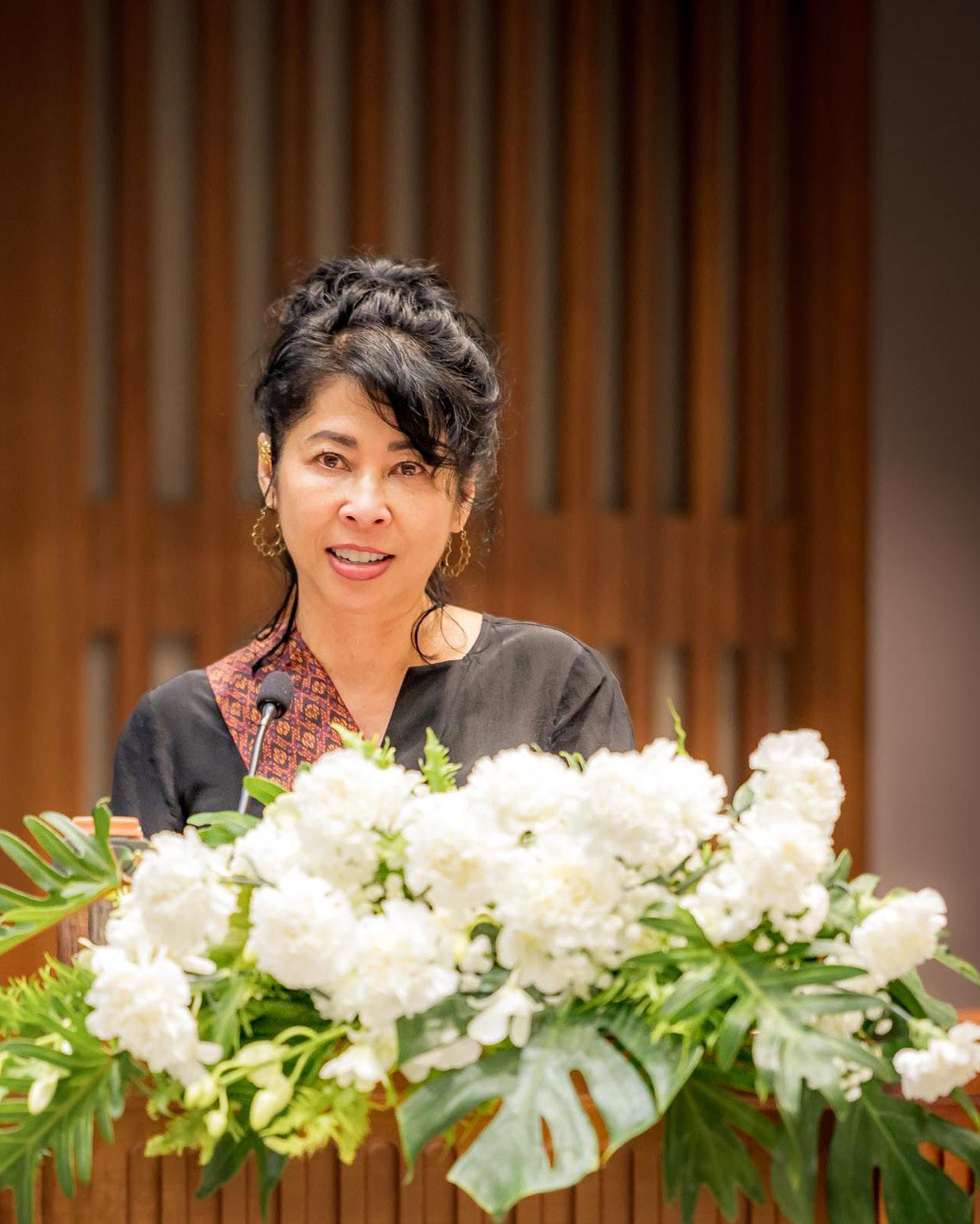

does not harm,” she declared, choosing instead to heal. Through 40 years of activism, she has helped over 28,000 Cambodians receive prosthetic limbs and donated the rights to her memoir, “First They Killed My Father,” to a human rights organisation.
Loung’s journey from survivor to advocate exemplifies the resilience of the human spirit. She
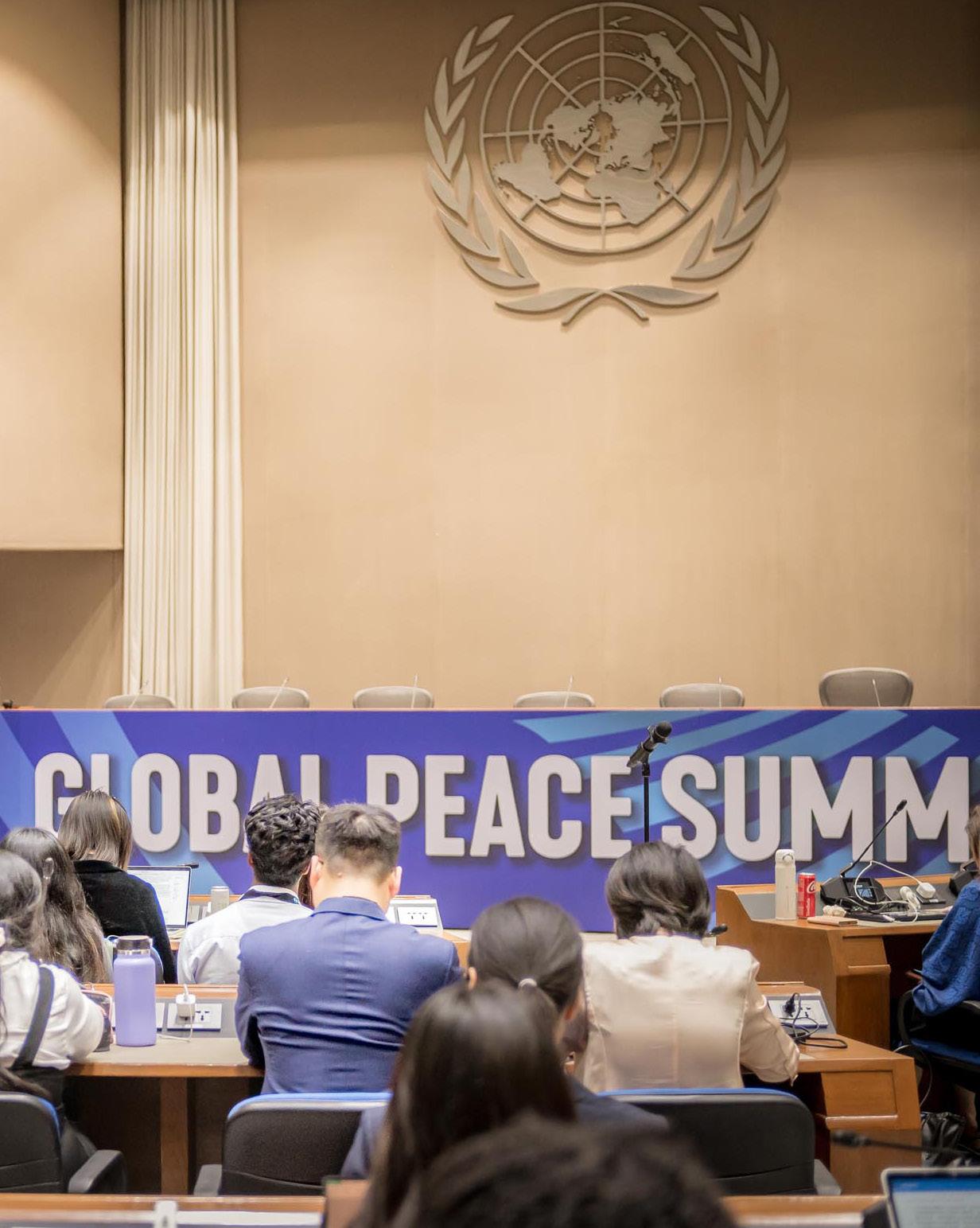
continues to raise awareness about the consequences of war and the power of peacebuilding. Her message is clear: healing is a choice, and through compassion and education, societies can break cycles of violence. Today, she inspires young leaders to stand against oppression, urging them to take action, listen deeply, and build a world where peace is not just an ideal but a reality.
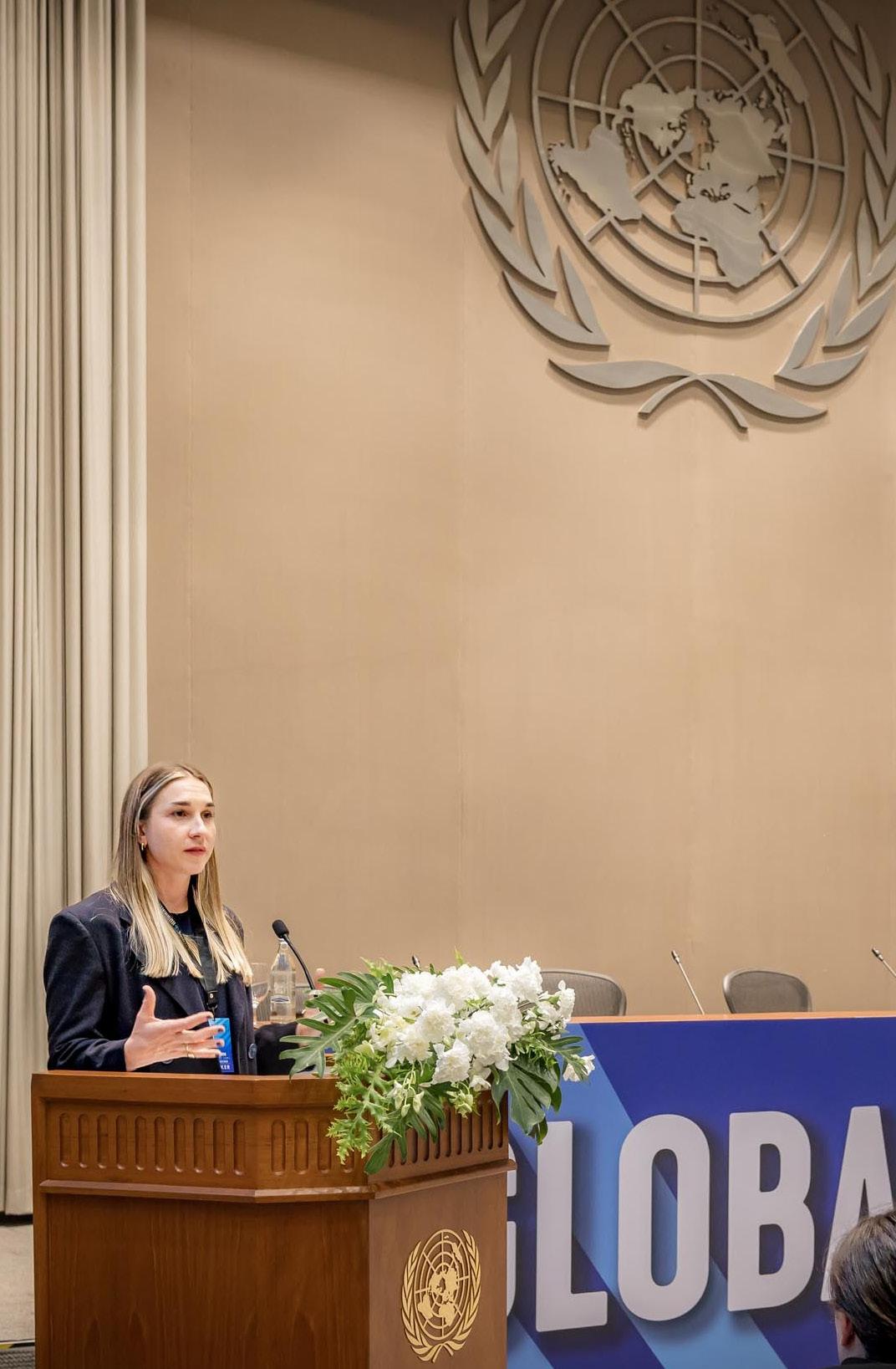
In the winter siege, a child would expose resilience of began in a concentration endured seven 50,000 women Rape was not of war, a means devastation, her life.
Two British journalists, were reporting her story. Her her, left her in her. Five days but as the people At three years given a home, Despite this, haunted her. hereditary,” herself. When children born nothing. No silence became Today, Lejla of war,” those by enemy soldiers like her, are consensual stigma. As
winter of 1992, as Sarajevo lay under child was born into circumstances that expose both the brutality of war and the of the human spirit. Lejla Damon’s life concentration camp, where her mother seven months of sexual violence - one of women raped during the Bosnian War. not just an act of cruelty but a weapon means of ethnic cleansing. Yet, amidst the devastation, an act of compassion would change
journalists, Tracey and Jeremy Damon, reporting on the war when they encountered Her biological mother, unable to keep in a hospital where the journalists found days later, they returned not as reporters people who would become her parents. years old, Lejla was brought to the UK and home, love, and a future.
this, questions of identity and belonging her. “I didn’t know if badness was hereditary,” she recalls, struggling to understand When she searched for others like herborn from wartime rape - she found No data, no stories, no support. That became the driving force behind her mission.
Lejla is a powerful advocate for “children those born to local mothers and fathered soldiers during or after conflict. Some, are the result of rape; others come from relationships, yet all face deep-seated co-founder of the Forgotten Children of
War Association, she works to provide safe spaces for healing and solidarity. What began with 33 family members has become a movement using art, film, and open conversation to challenge taboos and bring these stories to light.
But the challenges remain vast. Many of these children are denied education and medical care simply because they cannot provide a father’s name. “We are viewed as children of the enemy,” Lejla explains, describing the discrimination that strips them of fundamental rights. Justice has been painfully slow - out of 50,000 cases of rape in Bosnia, only about twelve resulted in trials. Many perpetrators still live in the same villages as their victims.
Lejla’s work, recognised by the Oslo Human Rights Award, calls for action from governments, NGOs, and local communities. “We need to change the narratives around children born of sexual violence,” she urges. “They are unseen, unloved, unrecognised.” She believes healing begins with dialogue and the courage to face uncomfortable truths.
Her message is urgent: “This can’t happen 30 years later - it has to happen now.” She challenges the world to “Be the voice for those who can’t be heard.” From a child of war to a champion of peace, Lejla Damon embodies resilience, proving that true peace is not just about ending war but healing its deepest wounds so that every child, no matter their origins, can be seen, heard, and valued.
Marina Cantacuzino delivered a profoundly moving and thought-provoking presentation, exploring the potential of using forgiveness as a powerful tool to transform pain, promote healing, and pave the way toward sustainable peace. Her presentation, infused with storytelling and heartfelt reflections, left the audience both captivated and inspired.
Marina began by recalling her childhood in London during the tumultuous period of IRA bombings. Growing up amidst violence shaped her understanding of the profound impacts of conflict and vengeance. However, the defining moment that set her on this path occurred years later, during the US invasion of Iraq. A haunting image of Ali Abbas, a young boy who lost his arms and family in a missile strike, deeply disturbed her. This poignant moment sparked an intense desire to challenge the global narrative of revenge. “I wanted to find evidence of how to break the cycle of vengeance and hatred,” she said, explaining her decision to begin collecting stories of forgiveness and healing.
What began as a modest storytelling initiative quickly gained momentum. Marina transformed her collection into an exhibition, never imagining the impact it would have. Tens of thousands of visitors from over 70 countries engaged with the stories, affirming a deep collective
yearning for restoration and humanity. This initiative became The Forgiveness Project, a ground-breaking charity that amplifies the voices of those who have turned their pain into acts of reconciliation. Today, the organization stands as a testament to the transformative power of storytelling in healing individuals and communities torn apart by conflict.
Marina’s presentation was punctuated with stories that illustrated the nuanced and multifaceted nature of forgiveness. One such narrative was of a mother who lost her daughter in the Ariana Grande concert terrorist attack. Despite her immense grief, she found comfort in a news story about a group of Muslim worshippers protecting an attacker outside a mosque from people seeking revenge for his stabbing of multiple individuals. Another powerful example came from Rwandan genocide survivors, who emphasized that sharing stories of restoration rather than shaming perpetrators was vital to maintaining fragile peace in the country. Marina reflected, “Using stories that shame will not secure peace; instead, restorative narratives heal, restore, and humanize.”
She delved into the concept of restorative narratives, describing them as stories rooted in inquiry rather than argument, with a focus on survival and growth. “Stories can unlock hearts,” Marina


said passionately. Yet, she acknowledged their dual-edged nature in today’s digital age, where misinformation and prejudice can be amplified. Her advocacy for storytelling as a peacebuilding tool is grounded in its ability to foster empathy, shift perspectives, and help people see the world through a broader lens.
Marina also explored the complexities of forgiveness, which she described as “a difficult word.” She challenged the misconception that forgiveness equates to weakness, framing it instead as “an act of extraordinary courage.” She shared the story of a domestic violence survivor who forgave her abusive husband, not to condone his actions, but to free herself from bitterness. Forgiveness, Marina explained, is not a one-size-fits-all solution. It can take many forms - conditional, unconditional, or even withheld and must always prioritize the needs and boundaries of the victim.
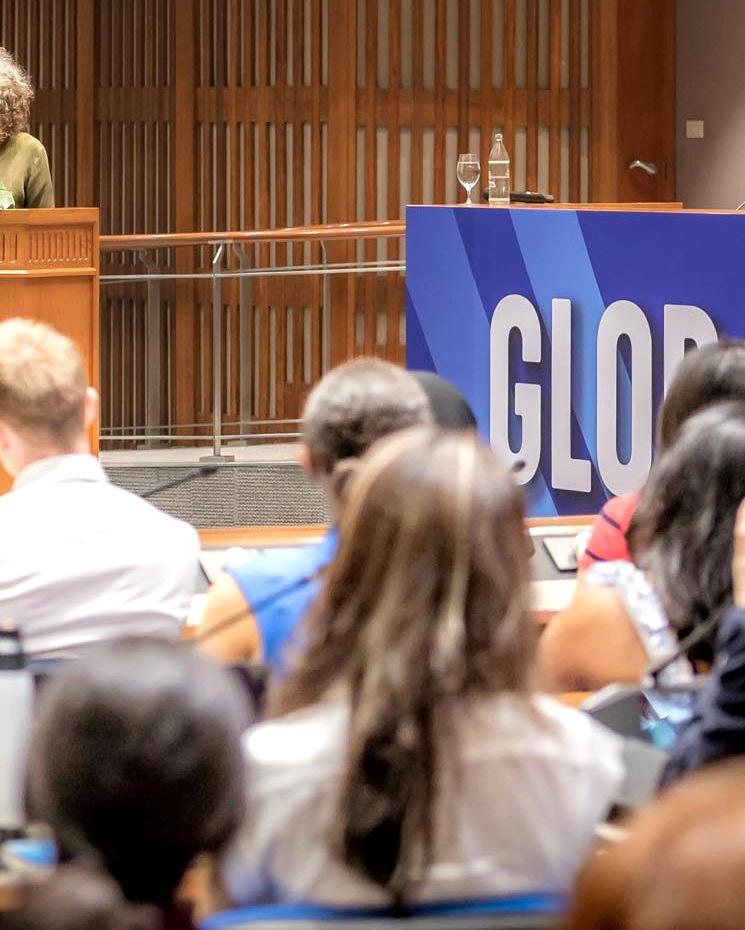
Marina concluded her presentation with a hopeful vision for the future. She spoke of Israelis and Palestinians reconciling through storytelling, and Fambul Tok, a grassroots initiative in Sierra Leone that fosters forgiveness through community dialogue. These examples illustrated that while forgiveness is challenging, it is also deeply transformative. “Forgiveness is the only way to achieve sustainable peace,” she said.
Marina’s presentation was a masterclass in storytelling, leaving the audience with profound questions and a renewed sense of hope. Her unwavering belief in the power of forgiveness and her dedication to amplifying voices of healing and reconciliation serve as an enduring reminder that peace begins within and that through courage, empathy, and dialogue, we can build a more compassionate world.
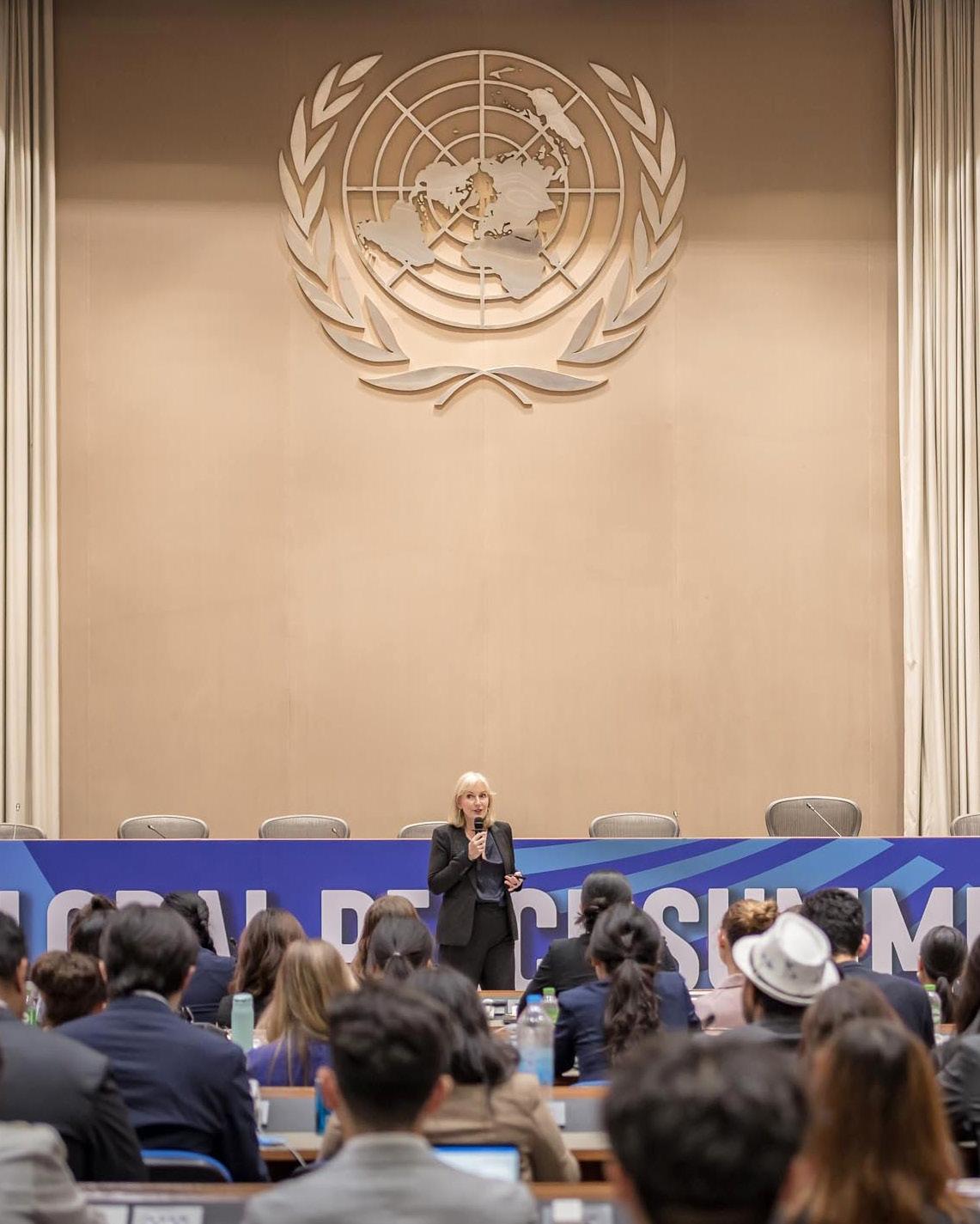
The atmosphere at the 4th Global Peace Summit was charged with anticipation as Jennifer Nadel took the stage. Her presence exuded a quiet power shaped by decades of confronting humanity’s darkest tragedies. Early in her career as a journalist, she stood on the frontlines of devastation, covering the Rwandan Genocide and the Bosnian War. These harrowing experiences didn’t just shape her perspective - they propelled her to act. “If you’re in this room, you’re here for a reason,” she began. “Documenting suffering wasn’t enough. I needed to be part of the solution.”
Jennifer’s journey evolved into a mission to infuse politics with empathy and integrity. As the co-founder of Compassion in Politics and Director of Compassionate Politics at Stanford University’s CCARE, she champions systemic change grounded in kindness. She explained compassion is far more than an emotion - it’s the awareness of another’s suffering, the empathy to understand it, and the determination to alleviate it. The concept sounded simple but was transformative in its potential. In a world driven by division, she argued, compassion is not a weakness but a revolutionary force capable of reshaping societies.
During Jennifer’s presentation, she explored why people often turn to hate
in moments of vulnerability: it provides an illusion of strength, belonging, and simplicity. Yet hate’s allies - fear, resentment, and judgment only deepen divisions. The antidote, she explained, lies in cultivating inner peace. Drawing from both science and wisdom, she examined the triggers of fight-or-flight responses and how self-preservation is, as Audre Lorde put it, “an act of political warfare.” Inner sustainability, Jennifer shared, is built through four pillars: gratitude for a positive mindset, redefining oneself to build emotional resilience, tending to physical basics, and embracing meditation for spiritual resilience. These practices, she argued, are not just self-care - they are the foundation for effective leadership and lasting peace.
In a world that often prioritises intellectual knowledge, Jennifer urged the delegates to focus on something more profound: discovering their heartbreak - the cause that moves them most. “Think about your action. Pick something manageable and work from there,” she said. It wasn’t just a challenge but a lifeline to clarity in a chaotic world. True activism, she explained, isn’t about grand gestures but small, consistent acts of change. Whether through policy, education, or everyday interactions, each person had the power to shift the world toward justice. Jennifer’s wisdom continued to resonate

as she discussed how compassion rebuilds trust in peacebuilding. “Trust is earned. The first step is to truly listen to others’ experiences,” she stressed. The politics of love, she explained, requires creating space for complexity and embracing differences. Using education to promote peace, she emphasised how inclusive classrooms foster empathy, reduce violence, and nurture understanding. “We don’t just need a shift in laws; we need a shift in consciousness,” she declared.

Jennifer’s presentation offered not just ideas but tangible ways to live and lead with compassion. Her call to find heartbreak, take action, and listen deeply left an enduring ripple in the hearts of all who heard her. As she quoted Rumi, “Out beyond ideas of wrongdoing and right doing, there is a field. I’ll meet you there.” It became clear that she wasn’t just urging change - she was guiding a path toward it, one rooted in courage, connection, and a profound belief in our shared humanity.
An exclusive and enlightening panel discussion with distinguished peacebuilders Manal Omar, Jennifer Nadel, Niemat Ahmadi, and Marina Cantacuzino. These remarkable women explored the complex challenges facing the peacekeeping and international communities in achieving sustainable peace in the 21st century. The discussion tackled fundamental questions: Who is peace truly for? Who are its architects? Who benefits from peacetime? And perhaps most crucially, who profits from conflict and may seek to undermine peace? These pressing questions formed the foundation of a rich dialogue between the panellists and engaged delegates.
Manal Omar set a powerful tone for the discussion with her observation, “Peace calls for everyone, but it’s only people special enough to pick up the phone.” Her contributions cantered on the internal dimensions of peacebuilding, noting, “We get so focused on the external that we forget about the internal.” She introduced the compelling concept of “the law of one,” explaining how touching a single life can create a ripple effect as people pay it forward and join the movement.
Jennifer Nadel brought practical insights from her experience as a negotiator. She shared a remarkable story of confining negotiating parties to a hotel for two days, requiring them to build personal connections
before returning to political discussions. “Connection is built through resilience,” she emphasized. Her background in law further informed her perspective on the “othering” of perpetrators, stressing that not all offenders can be categorized uniformly. Jennifer also underscored the power of social media in peacebuilding, noting that “many minds are better than one mind,” and reminded everyone that “kindness brings kindness. Peace brings peace.”
Niemat Ahmadi offered practical wisdom for sustaining peace efforts, emphasizing her powerful mantra: “Do what you can from wherever you are.” She highlighted the power of shared identities as an antidote to polarization, noting, “We are a lot more similar than we think.” Her statement, “If you want peace, work for justice,” served as a compelling reminder of the intrinsic connection between peace and justice.
Marina Cantacuzino contributed valuable perspectives on restorative justice and the importance of storytelling in peacebuilding. Drawing from her extensive experience in documenting stories of forgiveness and reconciliation, she emphasized how personal narratives can bridge divides and foster understanding between conflicting parties.
The panellists collectively addressed how to maintain momentum in peacebuilding

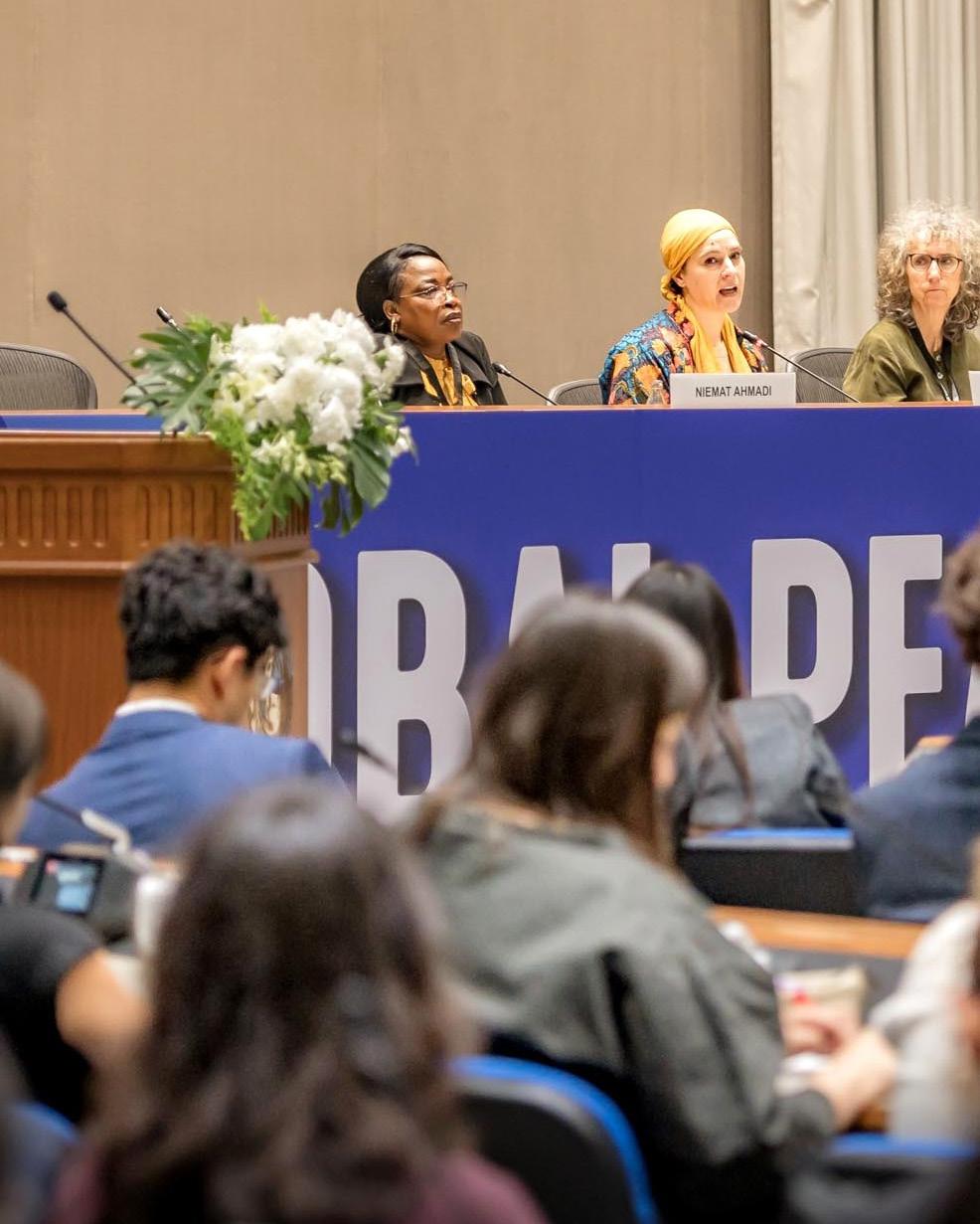
work, suggesting a focused approach: choose one area of interest, gradually expand it, and build purposeful groups around shared objectives. They emphasized two essential elements for success in peacebuilding: incorporating compassion and empathy into one’s chosen field, and maintaining persistence through challenging times, even when hope seems distant.
Their combined wisdom presented peacebuilding as both a personal journey and a communal endeavour. Their insights suggested that peace isn’t just about grand diplomatic gestures or international agreements, but about daily choices, persistent effort, and the recognition of our

shared humanity. Through their experiences and advice, they demonstrated that everyone has the potential to contribute to global peace, whether through professional work, community engagement, or personal transformation.
The discussion left delegates with practical tools and inspiration for continuing their peace work at home, emphasizing that sustainable peace requires both individual commitment and collective action. As these four remarkable women showed, the path to peace begins with personal conviction and grows through persistent, purposeful engagement with others.
Yoga and mindfulness instructor Aslihan Konez skilfully guided the delegates through transformative meditation and breathwork exercises, creating a space for deep reflection and inner peace. She emphasized the critical importance of nurturing our own serenity as a foundational step before we can effectively extend our energy outward to foster peace in the world around us.
This evocative session reminded everyone that true peace begins within. As Aslihan led the group through mindful breathing, she illustrated how cultivating inner calm not only enhances our own well-being but also empowers us to become more effective and compassionate agents of change in our communities and beyond. By grounding ourselves in stillness and balance, we become better equipped to approach the world’s challenges with clarity, empathy, and resilience.
The session also offered a rare opportunity for mutual connection, where delegates were gently encouraged to share a smile, offer a warm greeting, or even exchange an affectionate hug if they felt inclined. This moment of vulnerability and openness served as a reminder that peace is not just an abstract concept to discuss, but a living experience to be felt - first within ourselves and then extended to others.
As the delegates connected with one another, the session focused on building meaningful relationships within our global community. It became a radiant symbol of unity, highlighting the idea that our differences are far less significant than we often believe. In coming together during this moment of shared humanity, the delegates were reminded that peace is not only an ideal to aspire to but a practice that begins within and ripples outward, shaping the world we strive to create.



Over the past three days, 400 delegates from 46 nations have participated in the 4th Global Peace Summit, a transformative experience of learning, healing, and action. This summit has been more than just a conference; it has been a space where the seeds of future peace have been planted.
The journey began with a recognition of global instability but concluded with the understanding that peace is both deeply personal and collective. Through powerful insights from experts, delegates learned that sustainable peace requires individual transformation and systemic change.
The summit featured inspiring stories of survival and resilience, highlighting that true peace is an active choice we make daily. It underscored that justice and accountability are essential for lasting peace, and that women and youth must play central roles in any peace process. Peace begins within each of us, through our choices, actions, and our willingness to stand up for justice.
The summit also demonstrated the power of forgiveness, storytelling, and compassion in healing and reconciliation. It was a reminder that peace must be built from the ground up, engaging both grassroots movements and institutional structures.
The timing of the summit, coinciding with a ceasefire agreement in Gaza, reinforced the urgency of the work ahead. Delegates were reminded to stay vigilant in the pursuit of justice and to never forget those suffering under violence and occupation.
In closing, the summit emphasized that true leadership is not defined by titles but by the depth of compassion and commitment to infusing love into every action. Each delegate left not just as a participant, but as a Peace Ambassador, carrying the responsibility to create positive change.
As the summit concludes, delegates return home as part of a global network of peacebuilders, ready to replace violence with sustainable peace. The real work begins now, in communities, institutions, and daily choices. Together, with courage and purpose, we can create the peaceful world our future desperately needs. The journey toward peace is just beginning.